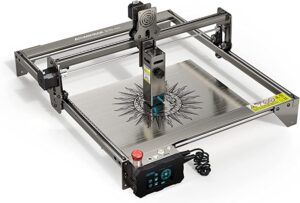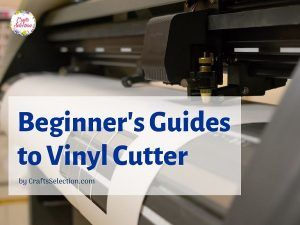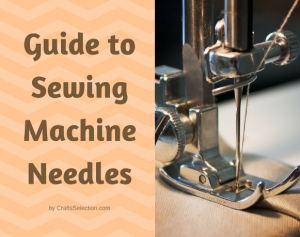Sewers usually deal with sharp needles, hot irons, and other risky stuff. So, accidents like cuts, burns, and pokes can happen.
If you’re new to sewing, you might be more likely to get hurt since you are still learning. Even pros can get hurt if they work a lot on clothes.
Knowing the right safety tips for sewing can cut down on accidents. Plus, it makes sewing fun and safe for both kids and pros.
In this article, you’ll discover typical injuries that may occur during hand and machine sewing. You will also learn how to prevent these sewing mishaps. Stay tuned for some great tips on staying safe while you sew!

Common Injuries in Sewing and How to Prevent
Sewing Needle Puncture
Needle puncture is common in hand and machine sewing. It occurs when the sharp needle pierces the skin, leading to pricks and cuts.
Without proper attention, needle finger bump sewing injury can lead to infection. If you find yourself in a needle-cut pickle, follow these steps:
- Clean the wound gently with mild soap and warm water
- Apply an antiseptic ointment to prevent infection
- Cover the wound with a clean, sterile bandage
- Seek medical attention if the wound doesn’t heal properly
You can avoid accidental contact by using needle guards or caps to cover the needle’s tip. Teaching kids and beginners proper needle installation on sewing machines can prevent harmful needle punctures.
Neck, Back, and Wrist Pain
When you sew on a machine for a long time, your neck and back might feel cranky. And with hand sewing, all that needle action can give your wrist a hard time with Repetitive Strain Injuries (RSI).
An expert study shows that 86% of sewing machine operators experience lower back pain every 7 days. In a similar survey by the Times of Malta, 83% of sewers experienced some kind of pain.
These pains are often caused by poor posture and lack of support/accessories necessary for sewing. For immediate relief while sewing, do any of the following:
- Gently stretch and move the affected area to release tension
- Apply a cold compress wrapped in a thin cloth to the painful area for 15-20 minutes to reduce inflammation
- Consult a healthcare professional if pain persists
You can prevent back pain when sewing by taking regular breaks. Alternatively, wrist supports or braces can eliminate hand-sewing injuries.
Burns
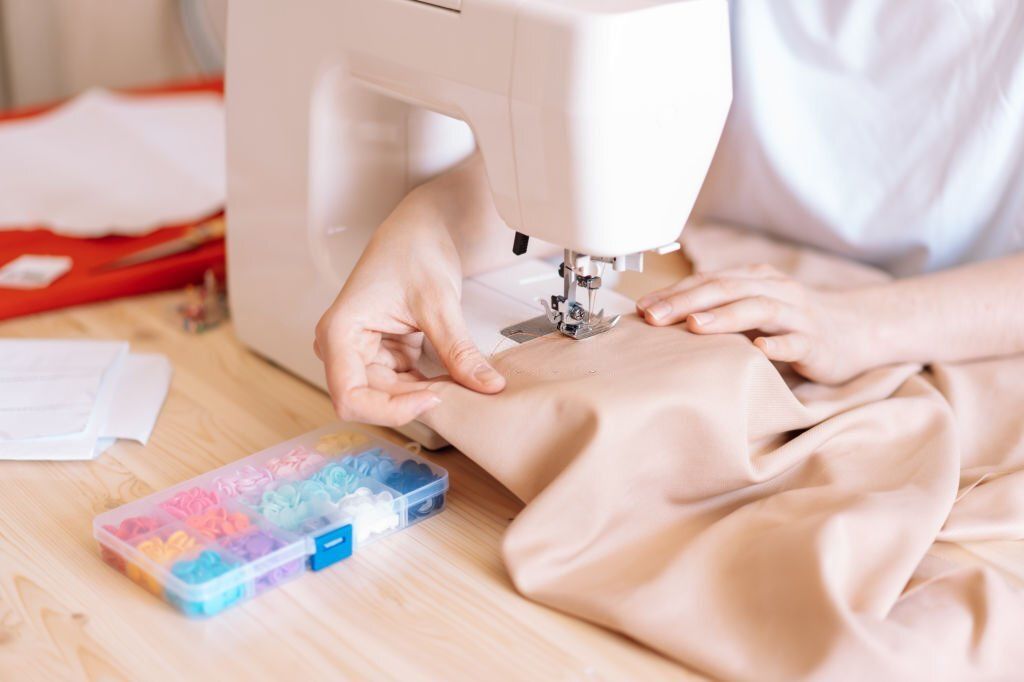

Sometimes, sewing machines can get too hot to handle or even cause a fire risk. And if you’re doing hand sewing, those irons can be sneaky burn culprits too.
If you end up with a minor burn, don’t sweat it. Just gently run the burn under cool (not icy) water for 10-20 minutes. After that, pop on a clean, non-stick cloth or a sterile dressing to keep it safe from germs.
Severe burns, especially in sensitive areas, may need professional medical attention. You can prevent burns by using quality irons and sewing machines.
Scissors/Rotary Cutter Cuts
Scissors or rotary cutter cuts can occur when the cutting tool slips and comes into contact with the sewer’s skin. Learners are prone to this sewing injury.
You can minimize cutter cuts by constantly monitoring beginners. Help young learners focus on their tasks by removing all forms of distractions.
To treat such injuries, immediately clean the wound and apply pressure if bleeding. You can also use an antiseptic ointment with a sterile bandage before covering it.
Needles Break and Fly Into The Eyes
When sewing by hand or machine, needles could accidentally pop into your eyes if they hit a snag or if materials are faulty. That’s why keeping an eye on kids or beginners while they learn to sew is super important.
If this ever happens, it’s best to get medical help immediately to safely remove the needle. To play it safe, you can grab some safety glasses or goggles for beginners, so no needles end up where they shouldn’t be!
Finger Numbness After Using Scissors
If your fingers go numb after using scissors, don’t worry, it’s common. Finger numbness happens because of the constant pressure and grip on the scissors, which can pinch a nerve and lead to that numb feeling.
You can prevent this by taking regular breaks, stretching your fingers, and using scissors with cushioned handles. Also, try not to grip the scissors too tightly.
If it happens, shake your hands and gently massage your fingers to regain blood flow. Stretch your fingers and give them a little rest.
Sewing Safety Tips
Every sewer must learn how to avoid injury using a sewing machine. More importantly, kids and young learners must master these sewing safety tips to prevent injuries.
According to the Pulse of the Fashion Industry Report, over 1 million injuries are recorded annually in the sewing industry. These injuries can range from minor cuts and burns to potentially severe hazards like fires or eye injuries due to needle punctures.
Here are six sewing safety rules for preventing injuries:
Set Up Your Workspace


Sewing in a disorganized workspace can increase injury risks. All materials should be organized within arm’s reach to avoid knocking something over accidentally.
Place all sewing equipment in their places. To avoid stepping on needles, it is advisable not to use carpets in sewing rooms.
The sewing area should have proper lighting, especially for young learners. Kids are more careful and calm when sewing in a brightly lit environment.
Professionals should invest in adjustable ergonomic seats for flexible movements when sewing. This will reduce back and neck pains common in machine sewing.
Use the Right Sewing Machine
The best sewing machine safety tip for kids is to provide them with the right machine.
Beginners can use sewing machines for kids to learn their craft without injury worries. Similarly, skilled quilters need industrial sewing machines for thick garments.
Keep in mind that old sewing machines are prone to overheating. Know when to update or change your sewing machine to avoid burns or fire outbreaks.
Read the sewing machine manual. The manual typically provides information on the machine’s unique features, correct use, and lifespan.
Protect Your Hands
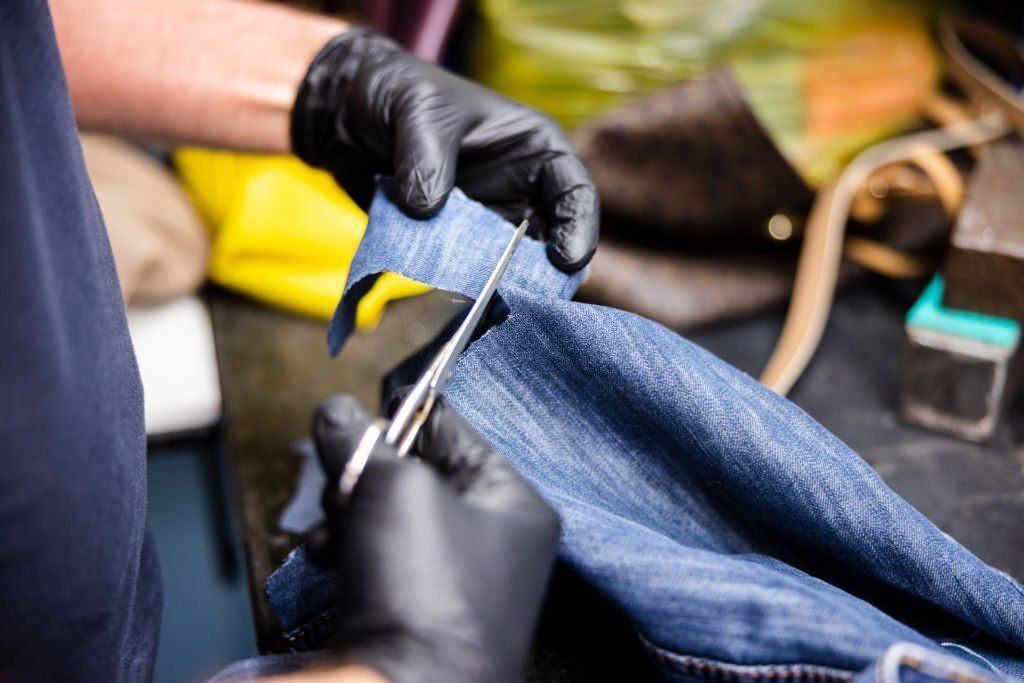

Avoiding hand injuries in sewing is difficult. But you can protect your hands using sewing gloves and finger guards. You can also use a rotary cutter safety shield to protect your hand while cutting.
A good hand-sewing safety tip is to use rubber pullers and thimbles. Sewing thimbles reduces the risk of accidentally pushing needles into your finger.
Generally, expert sewers avoid sewing machine needle injuries by keeping safe distances between hand and needle. For young learners, the ideal space between the hand and the machine needle should be at least one inch.
Always Start Slow
This is the ideal safety tip for inexperienced tailors or experts trying new sewing machines. Sewing is fun when you start slow.
Kids often suffer needle cuts when they get too excited and rush their sewing projects. You should monitor beginners and young learners to help them develop the following sewing habits:
- Ensure there are no pins inside fabrics when sewing
- Remove pins from the mouth and use wrist pin cushions instead
- Have a safe disposal container for broken pins/needles
- Maintain the right sewing posture
- Change the cutting ‘posture’ to reduce nerve compression or change the scissors
- Maintain an inch distance from the needle
- Wear safety glasses/goggles when you sew
- Do not enter the sewing area barefoot
Take Breaks
Working long hours can make you lose patience when stitching or machine sewing. Take occasional breaks to relax, refocus, stretch, and seek new inspirations.
You can use the Pomodoro technique to increase productivity and creativity. The time management tool provides consistent time breaks, giving you room to get reinspired before continuing your craft.
Don’t sew when you are sick or intoxicated. Furthermore, take longer breaks when recovering from illness.
Avoid Distractions
Sewing requires maximum focus. Extra attention is necessary for inexperienced learners. One basic sewing machine safety tip is to lift your foot from the control pedal whenever something distracts you.
Loose hair, garments, and sleeves can distract you unexpectedly. Tie your hair and fasten loose garments before using sewing machines.
Don’t allow vibrant children around your sewing workspace, especially when working on the machine. You can turn off the sewing machine to pay more attention to the kids. Other distractions to be mindful of include telephone calls, loud music, and barking dogs.
Final Words
Learning sewing can be exciting and challenging at the same time. As such, being mindful of every sewing needle safety tip is very important.
Some common sewing-related injuries are minor and can be treated quickly. Others can be severe, requiring professional medical attention. You can avoid minor and major injuries by following the sewing safety tips discussed above.
